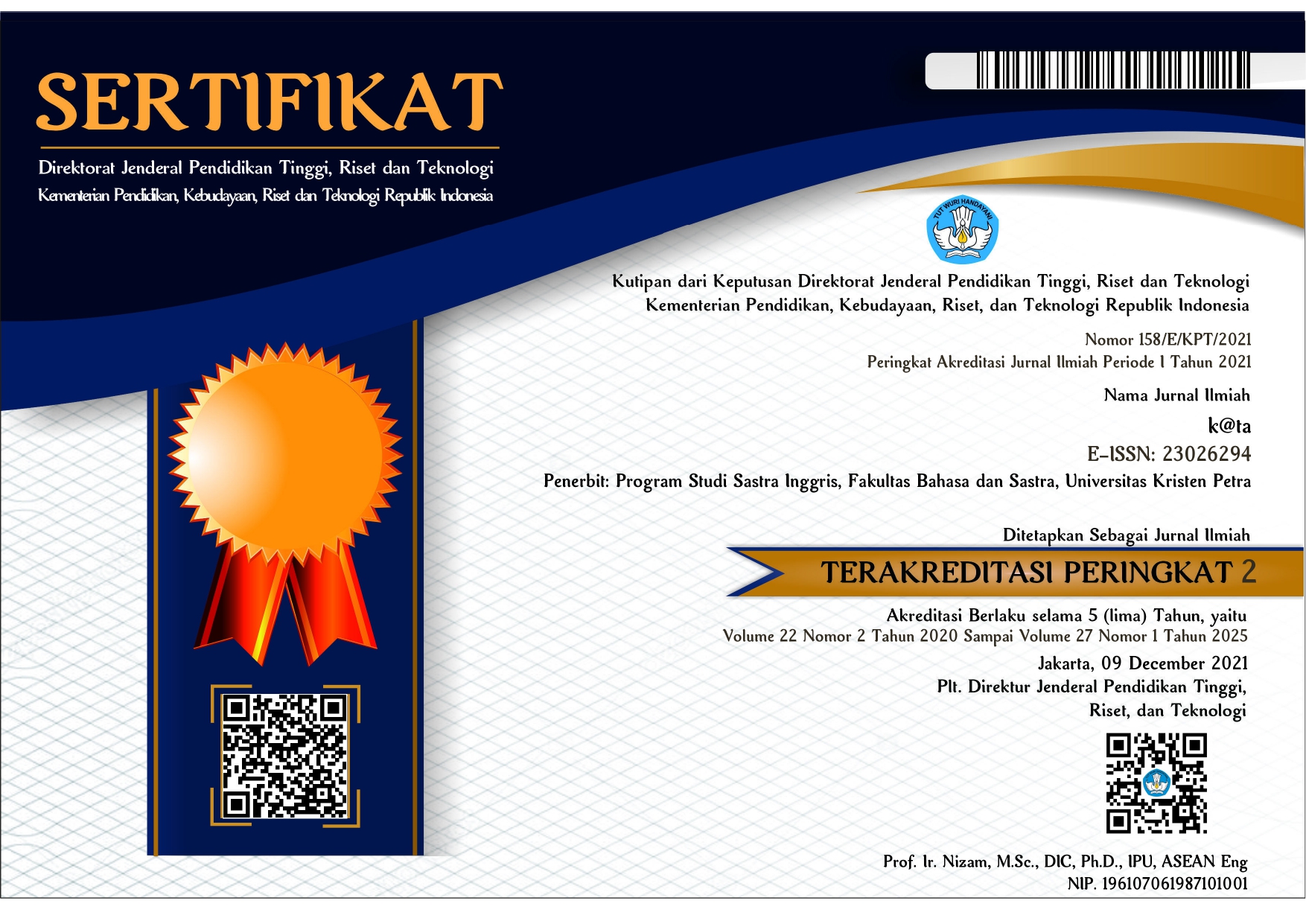A New Historical Reading of the Subversion of the Patriarchal ‘Juridico-Discursive’ Power in Victorian Period: Elizabeth Robins, Suffrage Drama, and the Concept of 'New Women'
Abstract
In this research, we employ a socio-historical examination of the subversion of the ‘juridico-discursive’ power in the late Victorian period in order to examine the rise of the British Suffrage Movement and specifically ‘suffrage drama’. we demonstrate how ordinary women and women artists, here in case of Elizabeth Robins, moved against the patriarchal artistic hegemony. The term ‘artistic hegemony’ is utilized here as a parallel term for ‘cultural hegemony’. In Marxism, and specifically in Gramscian theories, cultural hegemony refers to the domination of socio-cultural norms imposed by ruling class (bourgeoisie) on a society. These ideological norms are usually practiced through sets of diverse apparatuses commensurate with different social-class statutes. How this process (consciously or unconsciously, deliberately or accidently) occurred in the English Victorian society is not of concern in this study; however, we depict how marginalized groups, women in general, challenged the dominant overpowering apparatuses, whose power Michel Foucault believed to be ‘juridico-discursive’. We study how women, from the margins of the British society, challenged British ruling patriarchal foundations in the late nineteenth and early twentieth century and put an end to its negative up-to-down ‘juridico-discursive’ power. As one of the controlling apparatuses of the ruling class is always art and literature, we discuss how dramatic literature and theatre, specially through the concept of ‘suffrage drama’, as a ‘place of tolerance’ in a Foucauldian term, function as antitheses to the mainstream theatre in the setting of suffrage movement.
Downloads
References
(1891, April 25). The Stage.
(1891, April 26). Weekly Despatch.
Archer, W. (1891, April 29). The World.
Atkinson, D. (1988). Six Suffragette Photographs. In M. Joannou, & J. Purvis (Eds.), The Women’s Suffrage Movement: New Feminist Perspectives. Manchester: Manchester University Press.
Bederman, G. (1995). Manliness and Civilization: A Cultural History of Gender and Race in the United States, 1880–1917 . Chicago: University of Chicago Press.
Diamond, E. (1997). Unmaking Mimesis: Essays on Feminism and Theater. London: Routledge.
Farfan, P. (1996). From Hedda Gabler to Votes for Women: Elizabeth Robins's. Theatre Journal, 48(1).
Foucault, M. (1978). The History of Sexuality. New York: Pantheon Books.
Gay Gibson Cima, M. (1983). ‘Discovering Signs; The Emergence of the Critical Actor in Ibsen’. Theatre Journal.
Heilmann, A. (2000). New Woman Fiction: Women Writing First-Wave Feminism. Hampshire, England: Macmillan Press.
Holton, S. S. (2011). Challenging Masculinism: Personal History and Microhistory in Feminist Studies of the Women's Suffrage Movement.(the Gender of Whig Historiography: Women Writers and Britain's Pasts and Presents). Women's History Review. 20.5 (2011): 830-841., 20(50), 830-841.
Joannou, M. (2010). "Hilda, Harnessed to a Purpose": Elizabeth Robins, Ibsen, and the Vote. Comparative Drama, 44(2).
John, A. V. (1995). Elizabeth Robins: Staging a Life, 1862-1952. London: Routledge.
Kelly, K. E. (2008). Pandemic and Performance: Ibsen and the Outbreak of Modernism. . South Central Review, 25(1), 12-35.
Meyer, M. (1985). Ibsen . Harmondsworth: Penguin.
Nelson, C. C. (2001). A New Woman Reader: Fiction, Articles, and Drama of the 1890s. . Peterborough, Ontario , Canada: Broadview Press.
Pankhurst, E. (2010). My Own Story. Charleston: Nabu Press.
Purvis, J. (2002). Emmeline Pankhurst: A Biography. London: Routledge.
Purvis, J., & Holton, S. (2000). Votes for Women. London: Routledge.
Risk, S. M. (2012). Against Women's Suffrage: the Case of Maine and New Brunswick . American Review of Canadian Studies, 43(3).
Robins, E. (1908, October 27). Some Aspects of Henrik Ibsen. Edinburgh.
Robins, E. (1973). Ibsen and the Actress. New York: Haskell House.
Rooney, E. (2006). The Cambridge Companion to Feminist Literary Theory. Cambridge, UK: Cambridge University Press.
Sainsbury, D. (1999). Beyond the `great Divide': Women in Partisan Politics Before and After the Federal Suffrage . Women & Politics, 20(2).
Scott, C. (1997). A signed review by Clement Scott, Illustrated London News: 25 April 1891, 551–2. In M. Egan (Ed.), Henrik Ibsen: The Critical Heritage (pp. 225-228). London and New York: Routlege.
Stowell, S. (1992). A Stage of Their Own: Feminist Playwrights of the Suffrage Era. Ann Arbor: University of Michigan Press.
Van, W. S. (1999). The Women's Suffrage Movement in Britain, 1866-1928. Houndmills, Basingstoke, Hampshire: Macmillan Press.
Weber, B. R. (2011). Channeling Charlotte: Woman's Secret and Great Powers in Elizabeth Robins' White Violets. Women's Writing, 18(4), 486-504.
Woodworth, C. (2006). Cleaning House: Working-Class Women and Suffrage Drama. The Theatre Annual, 59, 19-38.

This work is licensed under a Creative Commons Attribution 4.0 International License.
![]() This work is licensed under a Creative Commons Attribution License
This work is licensed under a Creative Commons Attribution License



.png)
.png)

.png)












